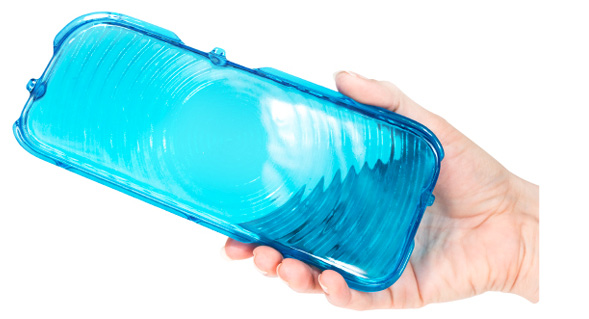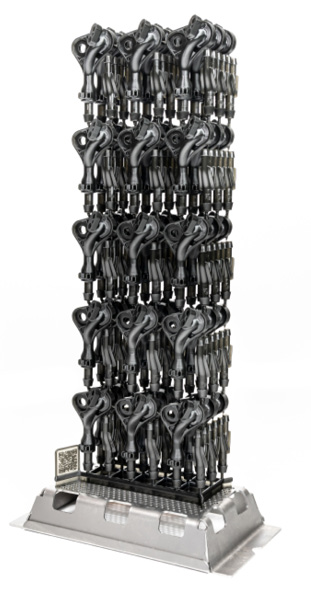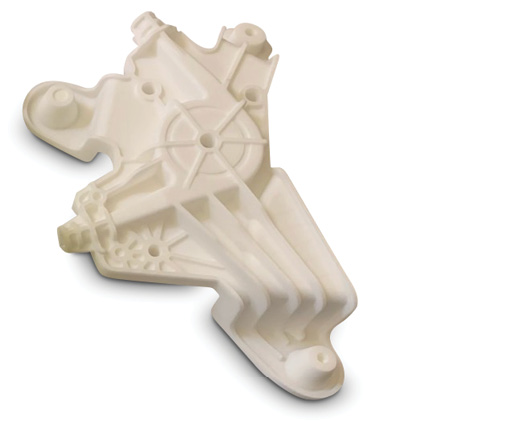By Marcel Spiegel
Success and growth depend on constant innovation to stay ahead of the competition. Last May Harvard Business Review found that 10 times more money is spent on R&D than on advertising worldwide.

But for many traditional manufacturers, implementing digital technology into their workflows can still be seen as an insurmountable challenge, with major financial implications that are not always realistic, leaving them struggling to know how to compete.
This can be particularly true of the automotive industry, largely due to the higher number of parts required in production. Leading automotive manufacturers are relying on additive manufacturing (AM) to accelerate the product development cycle and also to reduce resources such as time and energy. AM is already transforming automotive production workflows, impacting R&D, supply chains and production.
Iterative Research and Development
AM has revolutionized R&D for vehicle manufacturers—increasingly being used to reduce development times, improve prototyping workflows and deliver innovative parts that would not be possible using traditional techniques.

In several major U.S. auto manufacturers, 80% to 90% of each initial prototype assembly has been 3D printed. Some of the most popular components are air intakes, exhaust parts and ducting. These parts are designed digitally, 3D printed and fitted on a car in short order, then tested through multiple iterations. Rapid prototyping enables a shorter development phase and reduced time to final part.
Avoid Supply Chain Disruption
Most volume car manufacturers use just-in-time manufacturing, where large quantities of parts arrive at the production line immediately before assembly to reduce the need for costly warehouse space. AM can facilitate this process to create production parts on site, should there be disruptions to a manufacturer’s supply chain.
For example, during a recent planned release of a new car, the tooling for the box that contained the engine control unit (ECU) was incorrectly manufactured. As a result, the launch of this new vehicle was set to be delayed. To avoid the costly wait time for new tooling from a third-party supplier, the makers employed AM. The first several hundred cars produced in that run included ECUs housed in boxes created using direct digital production. The CAD file was optimized for 3D printing, resulting in an end-use production part in a fraction of the time needed for retooling.
Specialty Car Industry Customization
An intriguing example of real-world part production is with specialty car manufacturers such as sports cars, luxury cars and hypercars. These manufacturers produce low volume, prestigious and exotic cars for their customers. Because of the unique vehicles they manufacture, they also look for ways to create parts for these out-of-the-ordinary cars.

In this case, AM is being used to create custom brackets, spacers and grommets as well as complex, specialized units made specific to the individual requirements of the purchaser. One great example is the creation of personalized inscriptions for interior components such as the dashboard or doors.
AM Fuels the Rise of Electric Vehicles
Electric vehicles (EVs) are gaining popularity with consumers as an ‘environmentally friendlier’ mode of transportation. The incorporation of battery power versus an internal combustion engine has not removed weight reduction and engine cooling requirements from the equation.
Although recent advances have reduced the weight of the batteries that power EVs, they continue to be one of the heavier components of the vehicle. Increased vehicle weight impacts efficiency and performance. Therefore, as engineers design components for these vehicles, they are seeking ways to reduce weight in each part. Design for additive manufacturing (DfAM) causes engineers to rethink how they create components—allowing them to produce parts in ways not possible with traditional technologies. This results in parts with unique geometries—often at a reduced weight—that can be produced as a single final part versus multiple pieces requiring assembly. The result is reduced burden on the powertrain, which helps increase vehicle range.
Another innovation possible via the power of AM is a 3D-printed cooling jacket that acts as a heat exchanger. An EV’s electric motor and battery can generate a great deal of heat, especially during charging. To create the part, a designer scanned the car’s motor and battery, optimized the design using AM software and produced the part using a 3D printer. The bespoke design of the cooling jacket draws heat away from these vital components of the vehicle, helping reduce wear and tear—thus optimizing the parts’ lifespan. As automotive manufacturers continue to embrace AM, this is one area with incredible potential for the future.
How Automakers Pioneer in the Fast Lane
The quest to out-innovate competitors and reduce costs for every aspect of product development is business as usual in the automotive industry. Thorough, innovative designs and engineering require precise, reliable technology solutions—a space where AM can play an integral role.
AM complements traditional technologies in an automotive manufacturing workflow and is transforming various applications including creating replacement parts for vintage automobiles, prototyping parts for the latest automotive releases and developing unique parts for one-of-a-kind creations. The result is improved efficiency and reduced time to final part, which is accelerating innovation and competitive advantage. Automakers worldwide are seeing the benefits AM can bring and the tremendous potential to manufacture parts—and vehicles—in ways previously not considered possible.
Marcel Spiegler is director, Customer Innovation Center, Plastics, 3D Systems.
Article topics
Email Sign Up
















